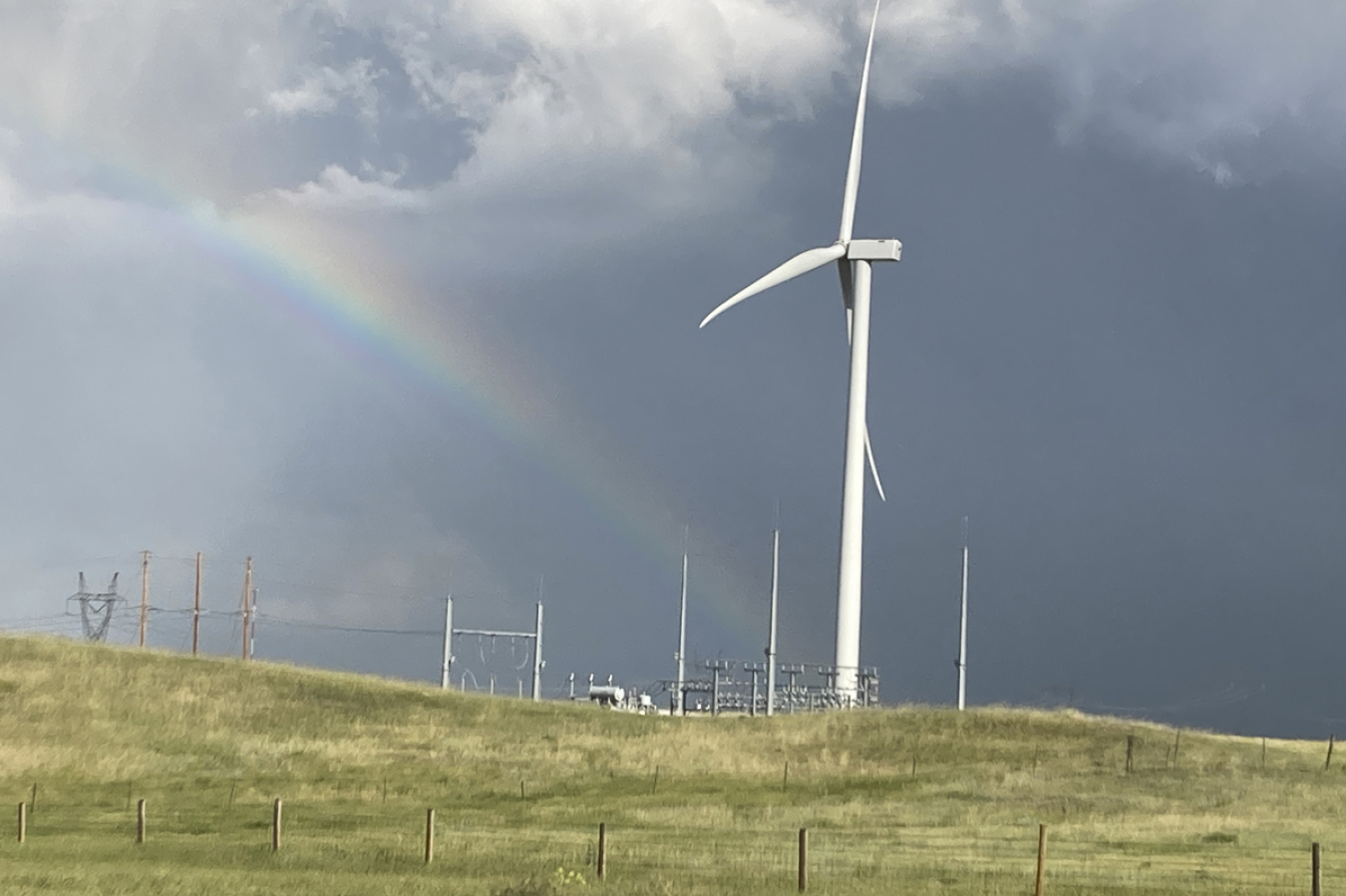
Corriedale Wind Energy Project and Black Hills Energy Substation near Cheyenne, Wyoming. Photo by Cynthia Bothwell
The Department of Energy's (DOE's) Wind Energy Technologies Office (WETO) works with electric grid operators, utilities, regulators, academia, and industry to create new strategies for incorporating increasing amounts of wind energy into the power system while maintaining economic and reliable operation of the grid.
Utilities have been increasingly deploying wind power to provide larger portions of electricity generation. However, some utilities have expressed concerns about wind power's possible impacts on electric power system operations. Wind is a variable energy resource, meaning wind speed is always fluctuating—so the energy from wind is always changing. This variability adds uncertainty for grid operators beyond what is present due to variations in electricity demand (also called load). These concerns, if not adequately addressed, could limit the development potential of wind power in the United States.
As the nation moves toward an energy system with higher penetrations of wind energy, it is increasingly important for grid operators to understand how they can plan for and operate a system that reliably integrates large quantities of wind energy into system operations; additionally, it is important to develop capabilities that enable these new wind power plants to provide much-needed grid services (e.g. frequency and voltage support) that can improve the reliability of the electric grid.
Goal
The office's goal in renewable systems integration is to remove barriers to enable grid system operators, via innovation, to capture the economic and environmental benefits of the increasing availability of wind energy, while enhancing grid operations and assuring overall system reliability, resiliency, and security. This can be accomplished through integration studies, modeling, demonstrations, and assessments at both the transmission and distribution levels, coupled with working directly with utilities to help ensure adoption of best practices.
Current Research Project Highlights
WETO and DOE National Laboratory researchers work with industry partners on projects aimed at better understanding integration issues and building confidence in the reliability of wind generation.
WETO also supports projects in the Grid Modernization Initiative through the Grid Modernization Laboratory Consortium (GMLC) —a strategic partnership between DOE and its national laboratories to collaborate on grid modernization.
To explore grid integration projects funded by the Wind Energy Technologies Office, see the summaries below or view our WETO R&D Projects Map and select Program Area: Grid Integration.
WETO’s grid integration portfolio focuses on four areas to enable cost-effective, cyber-secure, reliable, and efficient grid operation with increasing amount of wind:
- Transmission Adequacy and Access
- Grid Reliability
- Wind Hybrid Systems
- Wind Cybersecurity
Transmission Adequacy and Access
The long-lived nature of transmission infrastructure requires careful upfront analysis to evaluate where new transmission infrastructure is needed for both land-based and offshore wind, ensure that new or existing lines are best utilized, understand the benefits of new transmission development, and identify solutions to expediate wind interconnection to the nation’s electric grid.
The Gulf of Mexico Offshore Wind Transmission Planning– Literature Review and Gaps Analysis: Environmental, Community Readiness, and Infrastructure Report, co-funded by WETO and Grid Deployment Office (GDO) in collaboration with NREL, summarizes current research on available infrastructure, environmental factors, and community readiness as related to offshore wind transmission planning in the Gulf of Mexico.
The Atlantic Offshore Wind Transmission Study, led by National Renewable Energy Laboratory (NREL) and Pacific Northwest National Laboratory (PNNL), identifies and evaluates coordinated and shared transmission solutions to enable offshore wind deployment on the East Coast, through 2050, addressing gaps in existing analyses.
The Atlantic Offshore Wind Transmission Action Plan, released by DOE and the Department of the Interior, outlines immediate actions needed to connect the first generation of Atlantic offshore wind projects onto the electric grid, and longer-term efforts to support needed transmission over the next several decades. Informed by the study and a series of stakeholder convenings, the action plan will help guide cost-effective transmission solutions, including network, approaches to connect multiple projects to shore.
Informed by the West Coast Offshore Wind Transmission Literature Review and Gap Analysis, the study investigates transmission options supporting offshore wind development along the nation’s West Coast through 2050. In the study, researchers evaluated ways to achieve offshore wind energy goals that support grid reliability and resilience as well as ocean co-use. The study is led by PNNL and NREL.
I2X is a DOE program led by the Solar Energy Technologies Office and WETO in close collaboration with national laboratories, including Lawrence Berkeley National Laboratory. The mission of I2X is to enable simpler, faster, and fairer interconnection of clean energy resources while enhancing the reliability, resiliency, and security of our distribution and bulk-power electric grids. The I2X program offers technical assistance to directly support stakeholders in improving interconnection practices and processes for electricity distribution and transmission systems. The technical assistance is specific to the interconnection of clean energy technologies including solar, wind, storage, or electric vehicle charging facilities, or a hybrid integration of these technologies.
The i2X Transmission Roadmap outlines short-term and long-term solutions to improve the interconnection of clean energy sources to meet the growing demand from the clean energy transition. The roadmap serves as a guide for interconnection stakeholders on how to implement solutions to current interconnection challenges. These solutions include increasing data access and transparency while maintaining data security; improving interconnection processes and timelines for simpler, faster, and fairer outcomes; promoting economic efficiency for electricity customers by reducing costs and improving cost allocation; and maintaining a reliable, efficient, and secure grid.
This project, led by NREL, addresses regulatory and siting challenges that lead to delays in decision making and construction timelines for transmission projects. The goals of the project are to identify leading factors and best practices, and understand what factors contribute to construction delays and how to mitigate them.
The Transmission Optimization with Grid-Enhancing Technologies project, led by the Idaho National Laboratory (INL), is developing new modeling and simulation methodologies, conducting a full scale, multi-faceted field exercise, and enhancing further research on the impact of grid-enhancing technologies (GETs). GETs are hardware and software that increase the capacity, efficiency, and reliability of the transmission grid. This project builds on previous work from INL—involving technology such as Dynamic Line Rating—which acknowledges higher line ratings when it is windy and allows for greater wind generation. Overall, GETs focus on improving the transmission grid to enable larger integration of renewable sources such as wind and solar.
The cross-cutting High-Voltage Direct Current (HVDC) COst REduction (CORE) initiative, aims to reduce the cost of HVDC voltage source converter (VSC) transmission systems by 35% by 2035 to promote widespread adoption of the technology. HVDC transmission requires switching power sources from AC to DC and back again to connect to the grid, and using a HVDC VSC to conduct the power switch is optimal as it can turn itself on and off when needed, enabling consistent grid stability. Cost-effective HVDC VSC transmission systems will enable and simplify interconnection of renewable resources onto the nation’s grid.
Grid Reliability and Resilience
Changes in the national electricity generation mix require that weather-based generation sources—such as wind and solar energy—improve their ability to provide the suite of grid services that has historically been provided by conventional generation sources. This section of WETO's research portfolio focuses on advancing the capabilities of wind energy to provide the full suite of grid reliability and resilience services. Projects in this section also develop models and tools that support reliable and resilient system operation with increasing levels of wind.
Short circuit analysis is used to determine the force of short circuit currents—currents that introduce large amounts of destructive energy in the forms of heat and magnetic force into a power system. This project, led by Sandia National Laboratories in collaboration with Clemson University, is developing standardized comprehensive models of wind turbine generators to determine how well they respond to short circuits in a power system. The goal of the project is to expand wind turbine generator models for accurate modeling of hybrid wind systems.
This project, led by PNNL in collaboration with Clemson University and RTE-France, is an extension of GridPACK, a unique DOE-sponsored open-source high-performance computing library and framework that has achieved unprecedented speedup for power system computational applications. GridPACK™–Wind will deliver high-performance, high-fidelity simulation of renewable-dominated power systems, aiming for ten times speedup for a single disturbance event and hundred times speedup for large-scale - contingency analysis. The project will help enhance the resilience of power systems following major events that lead to power and systems failures.
This research project, led by NREL and PNNL, will develop a publicly available platform to model, process, and share wind power data for current and future land-based and offshore wind plants across the continental United States. This project will create 5-minute, 2-km meteorological and power data sets that will be integrated into the existing Wind Integration National Dataset Toolkit. The database will help grid operators, forecasters, and wind manufacturers in planning and operation of wind power plants.
This project, led by NREL in collaboration with team members from Det Norske Veritas group, General Electric (GE) Research, and Virginia Polytechnic University, studies the protection of multi-terminal high-voltage direct current (MT-HVDC) systems. MT-HVDC, a meshed DC network that can connect the DC side of several offshore wind HVDC converters, is a promising transmission technology that could enable cost-effective and reliable integration of offshore wind at scale in the U.S. coastal regions. This project aims to understand MT-HVDC response during electrical disturbances, enhance protection zones, and develop a roadmap for HVDC breaker requirements.
The Universal Interoperability for Grid‐Forming Inverters (UNIFI) Consortium, co-led by NREL, the University of Washington, and the Electric Power Research Institute, creates an extensive R&D ecosystem to evaluate and design grid-forming inverters, which are electronic devices that allow solar and wind energy sources to restart the grid independently. The goal of the consortium is to develop a universal set of guidelines that enable seamless integration of inverter-based resources like solar, wind, batteries, and electric vehicles to the future grid.
This project, led by NREL with team members from Idaho National Laboratory and Auburn University, will conduct a study of the impacts on grid reliability, stability, and resilience of Type 5 wind turbine generation. Different from other types of wind turbines that connect to the grid through converters, Type 5 turbines use synchronous generators — electro-mechanical devices that converts mechanical energy from turbines into electrical energy in the form of alternating current for grid connection. The project will investigate the characteristics of Type 5 wind turbines through modeling and simulation and evaluate its value in systems with very high shares of wind power and other inverter-based resources.
Wind Hybrid Systems
In addition to the efforts focusing specifically on the needs of wind technology, new market opportunities or alternative products may exist to couple various generation, load, and storage technologies to unlock new capabilities. WETO's unique role in providing national laboratory facilities and scientific understanding, along with experience in supporting industry, can enable the realization of these opportunities.
This NREL-led multi-lab project will answer key technical, operational, and financial questions around the deployment and operation of cost-effective, gigawatt-scale hydrogen production facilities in the United States that use renewable sources like wind to produce steel and ammonia. The project is co-funded by WETO and the Hydrogen and Fuel Cell Technologies Office.
Wind Cybersecurity
The nation's energy infrastructure has become a major target for cyberattack over the past decade. Increased integration of wind energy to the grid also increases opportunities for potential cyberattack. WETO is interested in gaining a better understanding of the current state of the art in cybersecurity from a wind energy perspective, including an assessment of the gaps and research needs related to cybersecurity for wind energy systems of all scales, including land-based, offshore, and distributed wind.
This project, led by INL, will deliver deployable cybersecurity tools and training specific to the wind industry. The toolkit will include a standardized, repeatable cybersecurity financial risk assessment that provides insight and guidance for investment decisions surrounding operational technology cybersecurity programs in the wind industry. The toolkit will also include information about wind systems for accurate modeling and risk evaluation.
This research project, co-led by NREL and INL with industry input, will perform an offshore wind cybersecurity assessment that will include a reference architecture, a simulation to analyze cybersecurity risks, and recommendations to better secure offshore wind energy. This information will allow DOE to evaluate the steps needed to address cyber security including communication and control architecture for offshore wind and transmission networks.
Programmable Logic Controllers (PLCs) are widely used by the wind industry to monitor and control wind turbine sensors and provide real-time data to detect errors, enabling quick response and recovery. Sandia National Laboratories developed a PLC-monitoring tool, called WeaselBoard, to detect when sophisticated malicious attackers conduct cyber exploits on PLCs. Leveraging WeaselBoard, this Sandia and NREL-led project is developing host-based intrusion detection technologies—which are cybersecurity solutions that monitor IT systems for suspicious activity—for wind systems. The tool will bolster communication systems, detect and alert on malicious wind operations, and increase response and recovery time following cyber attacks.
Past Research Project Highlights
Some highlights of past DOE-funded grid R&D include large-scale studies of future scenarios with high penetrations of variable renewable generation, such as the Interconnection Seam Study, North American Renewable Integration Study, Eastern Renewable Generation Integration Study, and Western Wind and Solar Integration Study. Some DOE-funded grid operation R&D highlights include studying how wind technology can stabilize grid through grid forming control, how software technology can use live weather data to calculate transmission line limits and enhance grid efficiency, and how wind can cool transmission lines thereby increasing transmission line capacity. Highlights of wind cybersecurity projects include the Roadmap for Wind Cybersecurity.
Learn more on our Past Research Project Highlights web page.
Grid Integration News
-
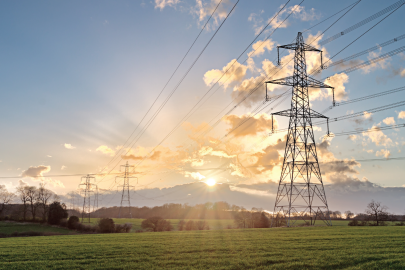 DOE-funded grid-enhancing technologies such as dynamic line rating help utilities safely deliver more power, ensuring a more reliable and cost-effective electric system ready to meet the nation’s growing energy demand.
DOE-funded grid-enhancing technologies such as dynamic line rating help utilities safely deliver more power, ensuring a more reliable and cost-effective electric system ready to meet the nation’s growing energy demand. -
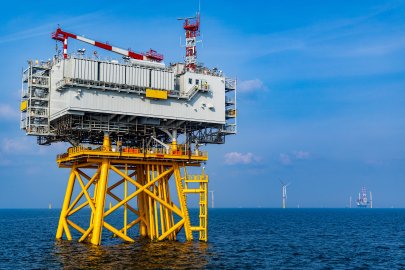 DOE's Office of Electricity and WETO plan to issue the REIMAGINE BREAKERS NOFO to support research and development related to high voltage direct current (HVDC) power circuit breakers.
DOE's Office of Electricity and WETO plan to issue the REIMAGINE BREAKERS NOFO to support research and development related to high voltage direct current (HVDC) power circuit breakers. -
 DOE announced selections of four projects, totaling $11 million in funding to improve HVDC Transmission Research and Development and help integrate renewable energy onto the grid and reach communities.
DOE announced selections of four projects, totaling $11 million in funding to improve HVDC Transmission Research and Development and help integrate renewable energy onto the grid and reach communities. -
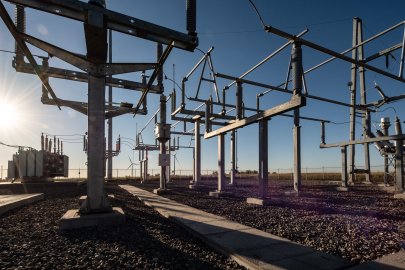 $11.2 million program to pilot solutions for managing renewable energy and electric vehicle charging interconnection and energization queues.
$11.2 million program to pilot solutions for managing renewable energy and electric vehicle charging interconnection and energization queues. -
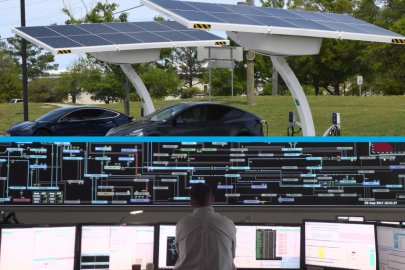 $31 million funding to improve power systems simulation software tools and demonstrate new business models for operators managing electric grids with large amounts of solar and wind generation, energy storage, and other distributed energy resources.
$31 million funding to improve power systems simulation software tools and demonstrate new business models for operators managing electric grids with large amounts of solar and wind generation, energy storage, and other distributed energy resources. -
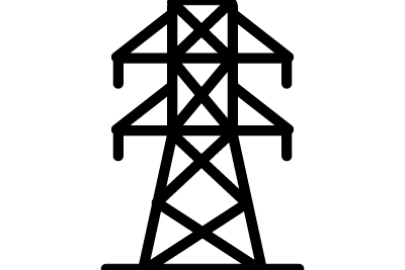 With support from the U.S. Department of Energy’s Wind Energy Technologies Office, the National Renewable Energy Laboratory is helping grid operators and equipment manufacturers successfully adapt to national energy addition using the Grid Impedance Scan Tool.
With support from the U.S. Department of Energy’s Wind Energy Technologies Office, the National Renewable Energy Laboratory is helping grid operators and equipment manufacturers successfully adapt to national energy addition using the Grid Impedance Scan Tool. -
 An Idaho National Laboratory report takes the first comprehensive look at cyberattack risks that could jeopardize U.S. wind energy systems and real-world events that have affected wind energy systems and organizations around the world.
An Idaho National Laboratory report takes the first comprehensive look at cyberattack risks that could jeopardize U.S. wind energy systems and real-world events that have affected wind energy systems and organizations around the world. -
 While studying mechanical engineering at the University of Texas in Austin, Paquette became interested in structural components and composite materials. Although he originally planned to pursue work in the aerospace industry, he jumped at the opportunity to work at Sandia on wind turbine blades—the largest composite structures in the world.
While studying mechanical engineering at the University of Texas in Austin, Paquette became interested in structural components and composite materials. Although he originally planned to pursue work in the aerospace industry, he jumped at the opportunity to work at Sandia on wind turbine blades—the largest composite structures in the world. -
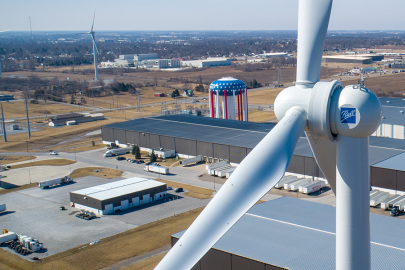 EERE intends to issue multiple funding opportunity announcements totaling over $100 million to modernize the grid and prepare the electricity system to support a renewable energy economy for all Americans.
EERE intends to issue multiple funding opportunity announcements totaling over $100 million to modernize the grid and prepare the electricity system to support a renewable energy economy for all Americans. -
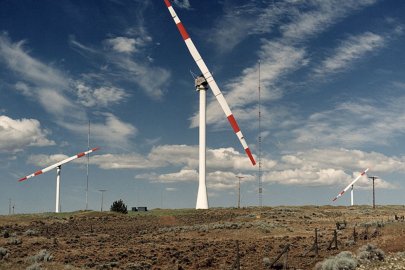 The DOE-NASA Mod-Series Wind Turbine Program precedes the modern wind energy industry in the United States. For over two decades, with five distinct models built, the program helped shape a cost-competitive wind energy industry through funding and R&D.
The DOE-NASA Mod-Series Wind Turbine Program precedes the modern wind energy industry in the United States. For over two decades, with five distinct models built, the program helped shape a cost-competitive wind energy industry through funding and R&D.
Grid Integration Featured Publications
-
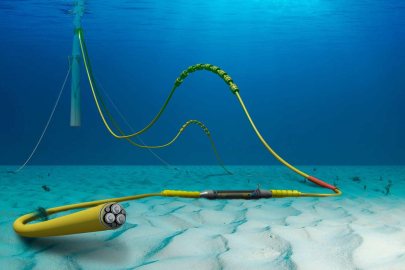 The U.S. Department of Energy (DOE) has released the West Coast Offshore Wind Transmission Study and Action Plan for Offshore Wind Transmission Development in the U.S. West Coast Region.
The U.S. Department of Energy (DOE) has released the West Coast Offshore Wind Transmission Study and Action Plan for Offshore Wind Transmission Development in the U.S. West Coast Region. -
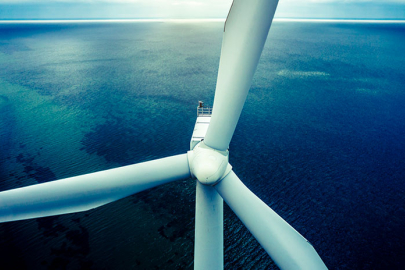 A new report explores ways to execute offshore wind energy transmission planning in the Gulf of Mexico.
A new report explores ways to execute offshore wind energy transmission planning in the Gulf of Mexico. -
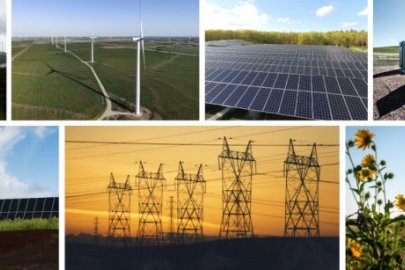 DOE report details near- to long-term solutions to enable simpler, faster, fairer interconnection of clean energy sources to the transmission grid.
DOE report details near- to long-term solutions to enable simpler, faster, fairer interconnection of clean energy sources to the transmission grid. -
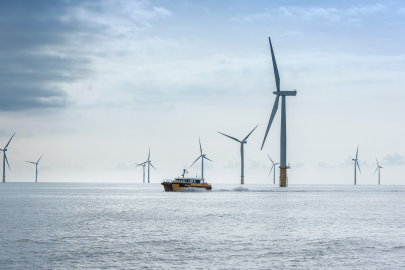 Study finds interregional offshore transmission network would support long-term growth of Atlantic offshore wind, action plan identifies immediate steps and extended efforts.
Study finds interregional offshore transmission network would support long-term growth of Atlantic offshore wind, action plan identifies immediate steps and extended efforts. -
An Action Plan for Offshore Wind Transmission Development in the U.S. Atlantic Region (Action Plan) details how wind resources could efficiently be captured off the Atlantic Coast of the United States and delivered to communities as clean, reliable power.
-
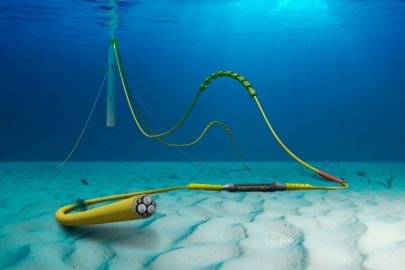 DOE’s Pacific Northwest National Laboratory (PNNL) will conduct a literature review of West Coast offshore wind transmission research to date, covering potential interconnections along California, Oregon, and Washington coastlines.
DOE’s Pacific Northwest National Laboratory (PNNL) will conduct a literature review of West Coast offshore wind transmission research to date, covering potential interconnections along California, Oregon, and Washington coastlines. -
This report details the use of dynamic line rating technology to rate a gen tie-line associated with a proposed wind farm.
-
In a landmark move, General Electric and the National Renewable Energy Laboratory operated a common class of wind turbines in grid-forming mode.
Stay informed by receiving the latest wind energy news, events, and updates.

